Showing Spotlights 89 - 96 of 158 in category All (newest first):
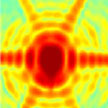 Following extensive research in the field of bionano-interfaces, it is now well understood that the primary interaction of biological species with nanoparticles is strongly dependent to the long-lived protein corona, i.e. a strongly adsorbed protein layer at the surface of nanoparticles. The amount, composition, and exposure site of the associated proteins in the long-lived protein corona can define the biological response to the nanoparticles and hence reveal their biological fate. Scientists have now shown that laser plasmonic heat induction leads to significant changes in the protein corona composition at the surface of gold nanorods.
Following extensive research in the field of bionano-interfaces, it is now well understood that the primary interaction of biological species with nanoparticles is strongly dependent to the long-lived protein corona, i.e. a strongly adsorbed protein layer at the surface of nanoparticles. The amount, composition, and exposure site of the associated proteins in the long-lived protein corona can define the biological response to the nanoparticles and hence reveal their biological fate. Scientists have now shown that laser plasmonic heat induction leads to significant changes in the protein corona composition at the surface of gold nanorods.
Dec 18th, 2013
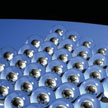 Over the past decade, electromagnetic metamaterials have become an extremely active field of research in both the physics and the engineering communities. Metamaterials gain their properties from their structure rather than directly from their composition and show the peculiarity of having an index of refraction at optical frequencies from negative to very high positive values. Researchers have now suggested a new type of optical sensing device based on artificial metamaterials with topological darkness.
Over the past decade, electromagnetic metamaterials have become an extremely active field of research in both the physics and the engineering communities. Metamaterials gain their properties from their structure rather than directly from their composition and show the peculiarity of having an index of refraction at optical frequencies from negative to very high positive values. Researchers have now suggested a new type of optical sensing device based on artificial metamaterials with topological darkness.
Nov 26th, 2013
 Technology in our lives is ever more based on miniaturized structures that deliver higher performance devices taking up a fraction of the space compared to several years ago. But seeing what is going on at these tiny length scales comparable to molecules is very hard. Normally light cannot be used since it is not focused tightly enough, limited by the optical wavelength which is much larger than the structures we want to observe. New research suggests that tightly squeezing light into small gaps in metallic nanostructures now provides a way to circumvent this problem.
Technology in our lives is ever more based on miniaturized structures that deliver higher performance devices taking up a fraction of the space compared to several years ago. But seeing what is going on at these tiny length scales comparable to molecules is very hard. Normally light cannot be used since it is not focused tightly enough, limited by the optical wavelength which is much larger than the structures we want to observe. New research suggests that tightly squeezing light into small gaps in metallic nanostructures now provides a way to circumvent this problem.
Oct 22nd, 2013
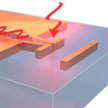 A team of researchers in Germany and the U.S. demonstrates that it is possible to operate extremely compact optical circuits on the nanoscale, a size scale that makes it compatible and potentially competitive with state-of-the-art electronic microchips, while substantially reducing the limiting factor of heating loss and while strongly increasing the efficiency to funnel infrared laser light into these circuits with a novel design of optical nanoantennas.
A team of researchers in Germany and the U.S. demonstrates that it is possible to operate extremely compact optical circuits on the nanoscale, a size scale that makes it compatible and potentially competitive with state-of-the-art electronic microchips, while substantially reducing the limiting factor of heating loss and while strongly increasing the efficiency to funnel infrared laser light into these circuits with a novel design of optical nanoantennas.
Sep 13th, 2013
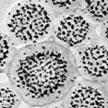 One major challenge in contemporary science is to accomplish with synthetic building blocks what nature does so well, that is, creating complex and functional structures through multiple levels of assembly of biomolecules. Bottom-up engineering of nanostructures that assemble themselves from polymer molecules are bound to become useful tools in chemistry. To that end, researchers are using block copolymer based micellar architectures to form hierarchical superstructures with defined shape and geometry. Researchers have now demonstrate that nanoparticles tethered with block copolymers resemble micelles that can assemble into well-ordered higher level mesostructures.
One major challenge in contemporary science is to accomplish with synthetic building blocks what nature does so well, that is, creating complex and functional structures through multiple levels of assembly of biomolecules. Bottom-up engineering of nanostructures that assemble themselves from polymer molecules are bound to become useful tools in chemistry. To that end, researchers are using block copolymer based micellar architectures to form hierarchical superstructures with defined shape and geometry. Researchers have now demonstrate that nanoparticles tethered with block copolymers resemble micelles that can assemble into well-ordered higher level mesostructures.
Jun 12th, 2013
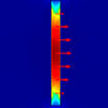 Nanoplasmonics and nanomechanics have been considered as two disparate fields. However, they both deal with waves of different nature. Nanoplasmonic antennas, or simply nanoantennas, are tiny optical analogs of radio-frequency antennas are resonators for light waves. On the other hand nanomechanical oscillators behave as resonators for acoustic waves. By integrating optical nanoantennas directly on a nanomechanical resonators, researchers have now shown that it is possible to achieve very efficient interactions between light and nanomechanical resonators. This hybrid approach enables novel functionalities in various applications.
Nanoplasmonics and nanomechanics have been considered as two disparate fields. However, they both deal with waves of different nature. Nanoplasmonic antennas, or simply nanoantennas, are tiny optical analogs of radio-frequency antennas are resonators for light waves. On the other hand nanomechanical oscillators behave as resonators for acoustic waves. By integrating optical nanoantennas directly on a nanomechanical resonators, researchers have now shown that it is possible to achieve very efficient interactions between light and nanomechanical resonators. This hybrid approach enables novel functionalities in various applications.
Apr 17th, 2013
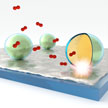 Conventional probing methods for localized surface properties often rely on ultra-high vacuum conditions. Consequently, approaches such as scanning tunneling microscopy have difficulties to resolve surface changes under realistic reaction conditions. Tip-enhanced Raman spectroscopy can investigate arbitrary substrates and more diverse reaction environments but suffers from weak Raman scattering signals. Also, the fabrication of robust, reproducible, and highly enhancing tips is still challenging. Researchers have now presented a novel platform for the optical detection of localized chemical reactions on surfaces that can help overcome these difficulties by offering a sensitive, reliable, and easy-to-implement technique to probe local chemical reactions while they occur under diverse environmental conditions.
Conventional probing methods for localized surface properties often rely on ultra-high vacuum conditions. Consequently, approaches such as scanning tunneling microscopy have difficulties to resolve surface changes under realistic reaction conditions. Tip-enhanced Raman spectroscopy can investigate arbitrary substrates and more diverse reaction environments but suffers from weak Raman scattering signals. Also, the fabrication of robust, reproducible, and highly enhancing tips is still challenging. Researchers have now presented a novel platform for the optical detection of localized chemical reactions on surfaces that can help overcome these difficulties by offering a sensitive, reliable, and easy-to-implement technique to probe local chemical reactions while they occur under diverse environmental conditions.
Mar 18th, 2013
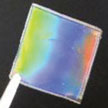 So-called shape memory polymers have the ability to reassume their original shape following temporary deformation. This function can be activated by means of external stimuli such as temperature change, light, or magnetic fields. Researchers have now shown that they can mold shape memory polymers into shapes relevant for micro-optics, and that they can exploit shape memory effects in this context to develop new kinds of programmable optical components. They demonstrate a series of deformable, shape-memorizing micro-optics using a shape memory elastomer.
So-called shape memory polymers have the ability to reassume their original shape following temporary deformation. This function can be activated by means of external stimuli such as temperature change, light, or magnetic fields. Researchers have now shown that they can mold shape memory polymers into shapes relevant for micro-optics, and that they can exploit shape memory effects in this context to develop new kinds of programmable optical components. They demonstrate a series of deformable, shape-memorizing micro-optics using a shape memory elastomer.
Mar 4th, 2013
 Following extensive research in the field of bionano-interfaces, it is now well understood that the primary interaction of biological species with nanoparticles is strongly dependent to the long-lived protein corona, i.e. a strongly adsorbed protein layer at the surface of nanoparticles. The amount, composition, and exposure site of the associated proteins in the long-lived protein corona can define the biological response to the nanoparticles and hence reveal their biological fate. Scientists have now shown that laser plasmonic heat induction leads to significant changes in the protein corona composition at the surface of gold nanorods.
Following extensive research in the field of bionano-interfaces, it is now well understood that the primary interaction of biological species with nanoparticles is strongly dependent to the long-lived protein corona, i.e. a strongly adsorbed protein layer at the surface of nanoparticles. The amount, composition, and exposure site of the associated proteins in the long-lived protein corona can define the biological response to the nanoparticles and hence reveal their biological fate. Scientists have now shown that laser plasmonic heat induction leads to significant changes in the protein corona composition at the surface of gold nanorods.
 Subscribe to our Nanotechnology Spotlight feed
Subscribe to our Nanotechnology Spotlight feed





